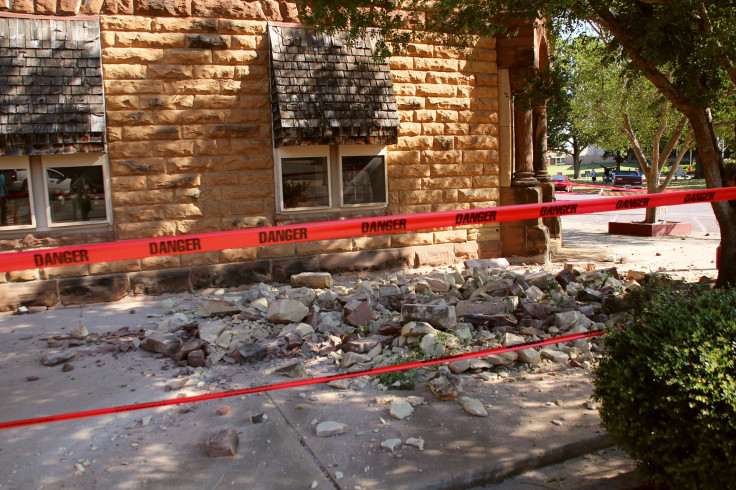What Causes Earthquakes? Oklahoma Issues Fracking Guidelines Amid Increased Seismic Activity Near Oil And Gas Wells

Officials in Oklahoma issued guidelines on hydraulic fracturing Tuesday to stop the increase in earthquakes in the state. Amid mixed messages about whether fracking actually causes seismic events, the state planned to take a proactive approach by analyzing the link to prevent future quakes.
The Oklahoma Corporation Commission, the state's oil and gas regulatory agency, and the Oklahoma Geological Survey issued guidelines for two areas in the state that are home to the majority of new oil and gas drilling sites. Depending on the severity and location of seismic activity in the areas, the groups will work together to determine whether to proceed with fracking operations.
The guidelines declare earthquakes ranking at 2.5 magnitude or higher within 1.25 miles of fracking operations will be assessed, and "mitigation procedures" will then be put in place at the drilling site. For quakes of 3.5 magnitude or above within 1.25 miles of a site, fracking operations will be suspended until an in-person assessment takes place to determine whether they should continue.
Hydraulic fracking refers to the process by which water, sand and chemicals are pumped into the ground to break apart rock and release gas trapped within. Controversy surrounds fracking operations throughout the United States, but particularly in Oklahoma. The state has seen a spike in earthquakes in recent years, with an average of 2 1/2 magnitude 3 quakes every day, a seismicity rate 600 times greater than in the years before 2008. A 5.6 magnitude earthquake struck central Oklahoma in September, leading the Oklahoma Corporation Commission to shut down 37 wells within a 725-square-mile radius of the epicenter.

In March, a survey by the U.S. Geological Survey found that "induced earthquakes" caused by human activity like fracking put nearly 8 million people in traditionally stable states like Oklahoma, Kansas, Colorado, New Mexico, Texas and Arkansas at the same risk of earthquakes as people in quake-prone California. However, the Geological Survey's website currently states, "fracking causes extremely small earthquakes, but they are almost always too small to be a concern."
© Copyright IBTimes 2024. All rights reserved.






















